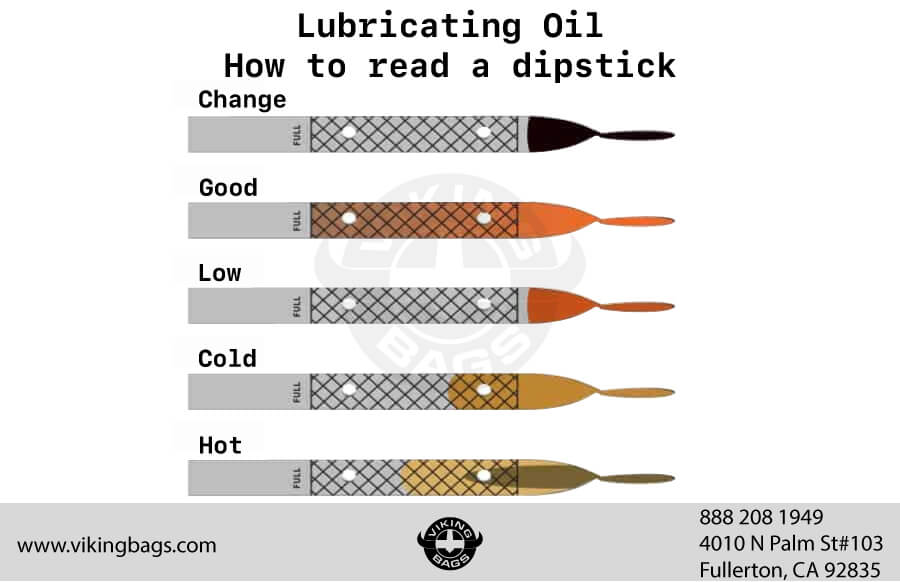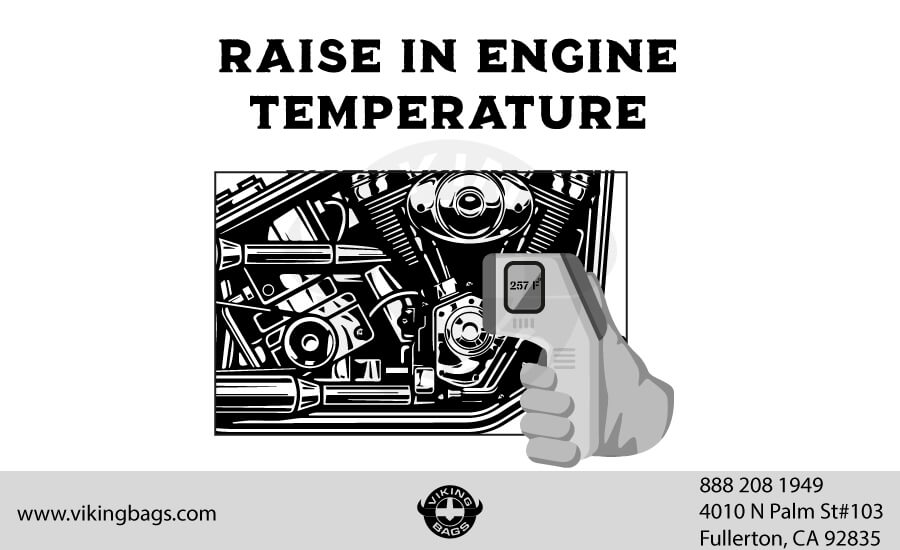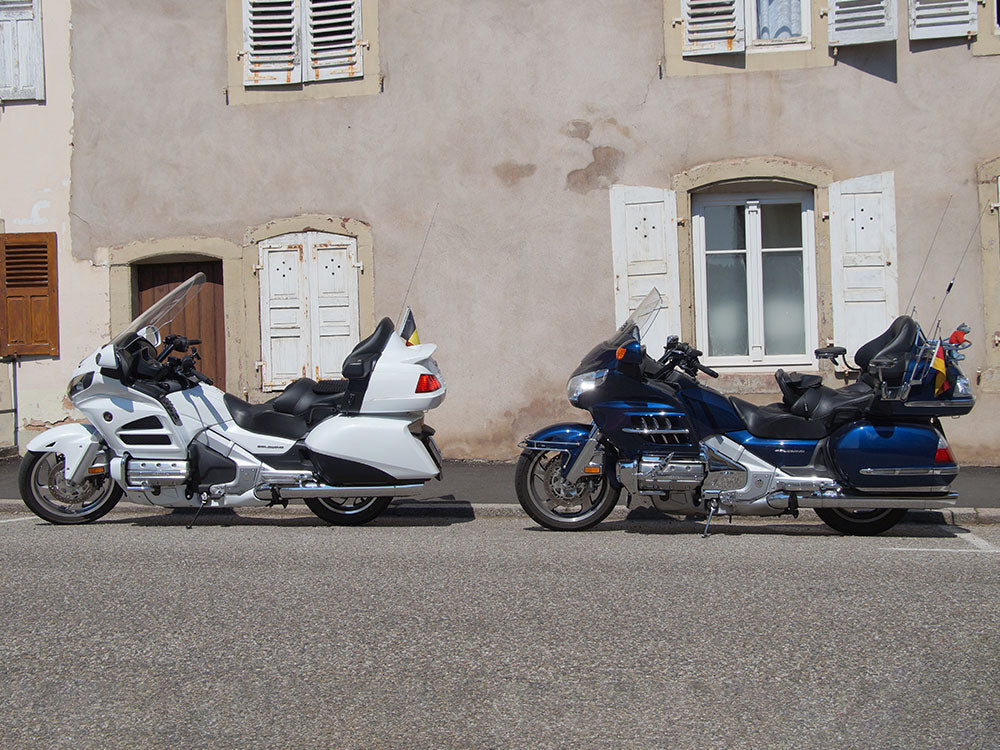Table of Content
1. Introduction:
Engine oil is a lubricant made specifically for automobile engines. It keeps the engine’s parts lubricated and prevents them from overheating. Engine oil helps lubricate the engine’s parts and reduces friction between them. Engine oil is essential for the engine’s performance since the excess sound and heat are caused by friction. The less friction there is, the more efficiently the engine will perform.
Engine oil needs to be replaced every once in a while. How frequently you need to replace the engine oil depends on how often you ride your motorcycle. If your motorcycle uses average engine oil, then the oil will need to be replaced after every 2,000 km. However, high-quality synthetic engine oil has good longevity, only needing to be replaced every 4,000 to 8,000 km.
No matter what kind of engine oil you use, sooner or later the oil will need to be replaced. Here are 10 signs that your motorcycle’s engine oil needs to be changed:
1.1 Oil Color:
Checking the oil’s color is the simplest method for checking the engine oil’s lifespan. Fresh engine oil is red, yellow, or orange in color, but will start to change over time as the engine continues running.

1.2 Oil Level:
The most common method among motorcycle mechanics for checking the condition of the engine oil is by using a dipstick. A dipstick is a thin plastic or metal stick with measurements along its length to show the engine oil’s level. When the dipstick is put into the engine, the length of the stick will be covered in oil, indicating the amount of engine oil remaining in the engine.

The dipstick not only helps you measure the engine oil’s level but also helps you examine the engine oil’s condition. The engine oil’s condition can be easily determined by the oil’s level and color on the dipstick.

On many motorcycles, the dipstick is a standard feature, already fitted to the cap of the engine oil changer hole.
1.3 Loud Noises:
When the engine oil is not changed regularly, the engine oil’s level becomes low and dirty, which reduces lubrication between the engine’s parts. Friction between engine parts increases and loud clanking sounds will be produced. This metallic clanking is due to the engine parts colliding, reducing the lifespan of the engine parts.
1.4 Oil Pressure:
Measuring oil pressure is similar to measuring oil level with a dipstick, except that oil pressure is measured by gauges already installed on the motorcycle. In newer motorcycles, oil pressure gauges are a standard feature that help rider keep track of the engine oil.
1.5 Warning Lights:
Newer motorcycles have a warning light on the oil pressure gauge, indicating that engine oil is low and needs to be replaced.
2. Results of Not Changing Engine Oil:
2.1 Raise in engine temperature:
Low engine oil causes less lubrication, causing increased friction and heat between engine parts. Increased heat causes the engine oil to burn, the burnt engine oil losing its lubrication more quickly than normal engine oil. In hot weather conditions, the increased air temperature causes the engine oil to become thinner due to its volume expanding in the high heat.

2.2 Engine vibration:
When the engine does not have the required amount of oil, it cannot provide enough power. Without enough power, the engine has to work harder at higher speeds. As the engine becomes overworked, it begins to produce more vibrations. In older motorcycles, engine vibrations are more noticeable, however, newer models have rubber-mounted engines which reduce the vibrations you feel.
2.3 Low throttle response:
Less lubrication and power output results in the motorcycle’s throttle response also decreasing. If the motorcycle requires more throttle to attain the desired speed, this may indicate that the engine oil needs to be changed.
2.4 Dark smoke from the exhaust:
If the engine oil is not replaced regularly, then the ring pistons will start wearing out and the burnt engine oil will start mixing with the air, resulting in dark smoke emitting from the exhaust. The dark smoke and worn-out ring pistons may also cause the spark plug to become damaged. In this scenario, the best thing to do is replace the ring pistons. If replacing the ring pistons is too expensive, then the best option is to change the engine oil, although this is only a temporary fix.

2.5 Engine seizure:
If the engine oil is not replaced regularly, the friction between engine parts burns the engine oil, resulting in less lubrication that will cause the engine parts to jam. Engine parts that jam will cause the engine to seize up and the motorcycle to be unable to start. The main reason behind engine seizures is the ring pistons becoming worn out. Worn-out ring pistons cause dark smoke to start emitting from the exhaust. Friction between engine parts causes buildup that blocks the oil pump, preventing the engine from getting the required amount of oil.

3. Engine Oil Capacity for Different Motorcycles:
There are different motorcycle types, like CRUISERS, CAFE RACERS, ADVENTURE, DIRT, SPORTS, TOURING, and STANDARD bikes. Every motorcycle is built for a different purpose and has different types of specifications as well. All of these are directed toward different audiences. Therefore, they also have different engine oil capacities.
Cruisers, adventure bikes, and touring motorcycles are designed to provide maximum comfort for long-distance rides. Cruisers and touring motorcycles have bigger engines, requiring more fuel than other types of motorcycles.
Cruisers need three to four quarts of engine oil.
Touring motorcycles need four to six quarts of engine oil
| Motorcycle Type | Engine Oil Capacity |
|---|---|
| Cruiser | 3-4 quarts |
| Touring | 4-6 quarts |
| Adventure | 2-5 quarts (depending on engine size) |
| Sports | 1-2 quarts |
| Café Racer | 1 quart |
| Dirt | 1 quart |
| Standard | 1-1.2 quarts |
4. Conclusion:
The best time to change out the engine oil is usually after the motorcycle has driven 2,000 to 5,000 km, though this varies depending on the quality of the engine oil. Check the motorcycle’s engine oil level every week or every month. Whenever the engine oil’s color seems darker or the engine oil seems low on the dipstick, change the engine oil.
Other than engine oil, there are several other items like SADDLEBAGS, SEATS, and other PARTS that can are available from VIKING BAGS. All of these can make the riding experience smoother and more efficient.













Leave a comment
All comments are moderated before being published.
This site is protected by hCaptcha and the hCaptcha Privacy Policy and Terms of Service apply.